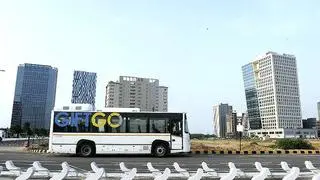The government has estimated that, annually, it has to shell out nearly ₹20,000 crore as refund on account of inverted duty structure (IDS).
IDS is an arrangement for manufactured items where raw materials have higher duty, while finished product attracts lower duty. Such imbalanced tax structure results into accumulation of tax credits (input tax credit or ITC) in the hands of the tax payers.
Under the GST regime, a registered taxpayer can claim a refund of unutilised ITC at the end of any tax period, where the credit has accumulated on account of rate of tax on inputs being higher than that on output supplies. In a note prepared for 38th GST Council meeting, it has been said that manufactured goods in lower rate slabs (5 per cent or 12 per cent) suffer IDS, which has led to demand for refund ITC on services and capital goods. This has also led to litigations and distortions.
“Estimated refunds on account of IDS are ₹20,000 crore a year,” the note said. There are indications that the Council might initiate measures to remove this anomaly in its next meeting expected to take place after the Budget is presented in February. The note has listed nearly two dozen manufactured items and services which form case study for IDS. These include mobile phones, footwear, fabrics, man-made yarn, ready made garments and made-ups. Fertilisers, renewal equipment, tractors, pharma, generators/inverters, edible oil, job work, agarbatti, agri machinery, utensil, bicycles, LED light, milling machines, ink, ethyl alcohol, medical equipment, PP bags and water pumps.
Experts’ take
MS Mani, Partner at Deloitte India feels that the eventual solution for avoiding inverted duty situations is to move to a rate regime where all goods are taxed at the same rate, “in the interim, the refund processes should be robust enough to grant refunds expeditiously so that working-capital blockages are avoided,” he said.
According to Nirmal Singh, Partner at Nangia Andersen LLP, while one of the objectives behind introduction of GST in India was to eliminate the cascading effects of various taxes and free flow of input tax credits. However, there seems to be some re-provisions which are not in line with this objective, one of which is refund of unutilised ITC in the case of IDS.
Under the earlier tax regime, there were no provisions for refund on account of this duty structure; enabling provisions have been incorporated in the GST to allow refund of accumulated credit due to IDS.
Relevant provisions relating to refund of IDS were amended to restrict the scope of refund to inputs only (and not to input services) with retrospective effect.
This amendment provides for refund of tax paid on input only, without considering and appreciating the fact that for providing output supply, both the input as well as input services are used. There is no apparent justification for excluding input services from the purview of ‘net ITC’ for computing the refund amount under inverted duty structure.
Impact on govt initiatives
Such restrictions have direct impact on the ‘Make in India’ initiatives and ease of doing business, since the taxpayer falling under lower tax brackets will be piled-up with ever-increasing GST credits and losses for small and medium enterprises using job working services and having an IDS. “In the time of technology, the Government should reckon that services are inevitable part of manufacturing activity and Government should take appropriate steps to ensure that refunds are allowed for input services also to remove the undue hardship to the industry,” he advised.








Comments
Comments have to be in English, and in full sentences. They cannot be abusive or personal. Please abide by our community guidelines for posting your comments.
We have migrated to a new commenting platform. If you are already a registered user of TheHindu Businessline and logged in, you may continue to engage with our articles. If you do not have an account please register and login to post comments. Users can access their older comments by logging into their accounts on Vuukle.